California-based artist Daniella Woolf originally wanted to be a surgeon but instead she wields an X-Acto knife in lieu of a scalpel, and stitches and glues large scale abstract paper textile art.
Daniella reveals how letting go of fear has freed her to experiment and evolve. Her ‘don’t think, just do it’ attitude has allowed her to pivot from one medium to another and embrace new techniques. She likes to get herself out of the way and create a non-thinking environment that allows discovery and experimentation to flourish.
‘Everything’s better with shredding’, Daniella says. Through this deliberate destruction, often of everyday waste paper, exciting new formations and configurations emerge. In her search for pattern, Daniella creates something hidden, revealed and concealed.
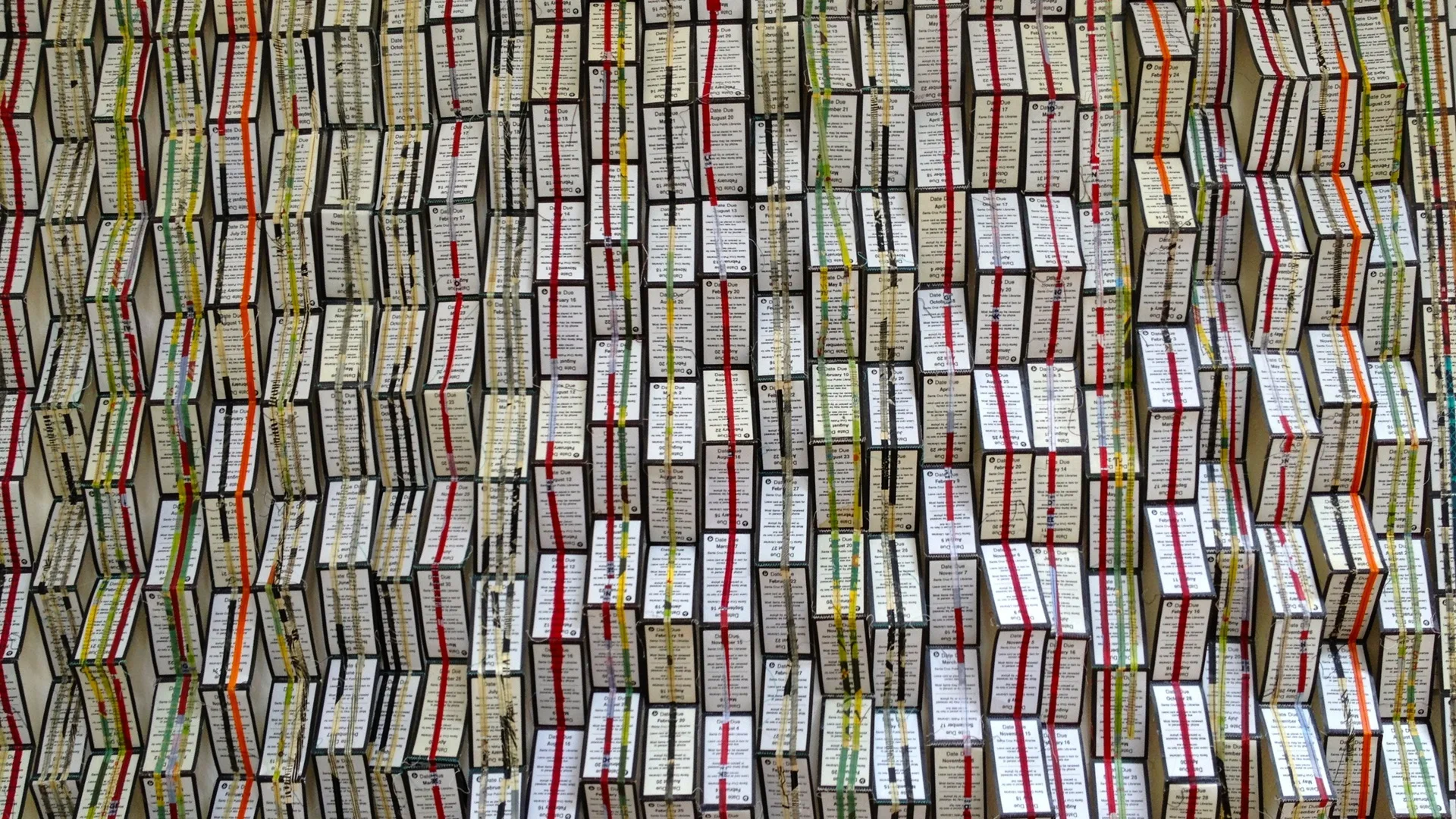
Daniella Woolf: I bring order out of chaos. My chosen medium is paper, paper and paper. My techniques are stacking, wrapping, piercing, weaving, glueing and sewing.
My work has something hidden, revealed and concealed. I’m searching for patterns through play and discovery.
I don’t usually plan my work: I ‘doodle’ with materials in the studio, and something will materialise from this non-thinking frame of mind. Then I try to recreate what arrived in that naïve state.
“What materialises when I work consciously is never as good as what comes up when not thinking. I try to practise non-thinking, just doing.”
Daniella Woolf,
For example, lately, I’ve been avoiding looking at which papers I pick up to collage to a surface, thereby discovering what happens by chance.
My process typically begins with writing my stream of consciousness morning pages, or journaling. I have a beautiful, light-filled studio that is my favourite place in the world. It’s my sacred space where I work and have privacy.
I like to work in silence and I work on multiple series at once. I find that when I am doing ‘mindless work’ I will get an idea of how to solve a problem in another series or generate an idea that will start another series.
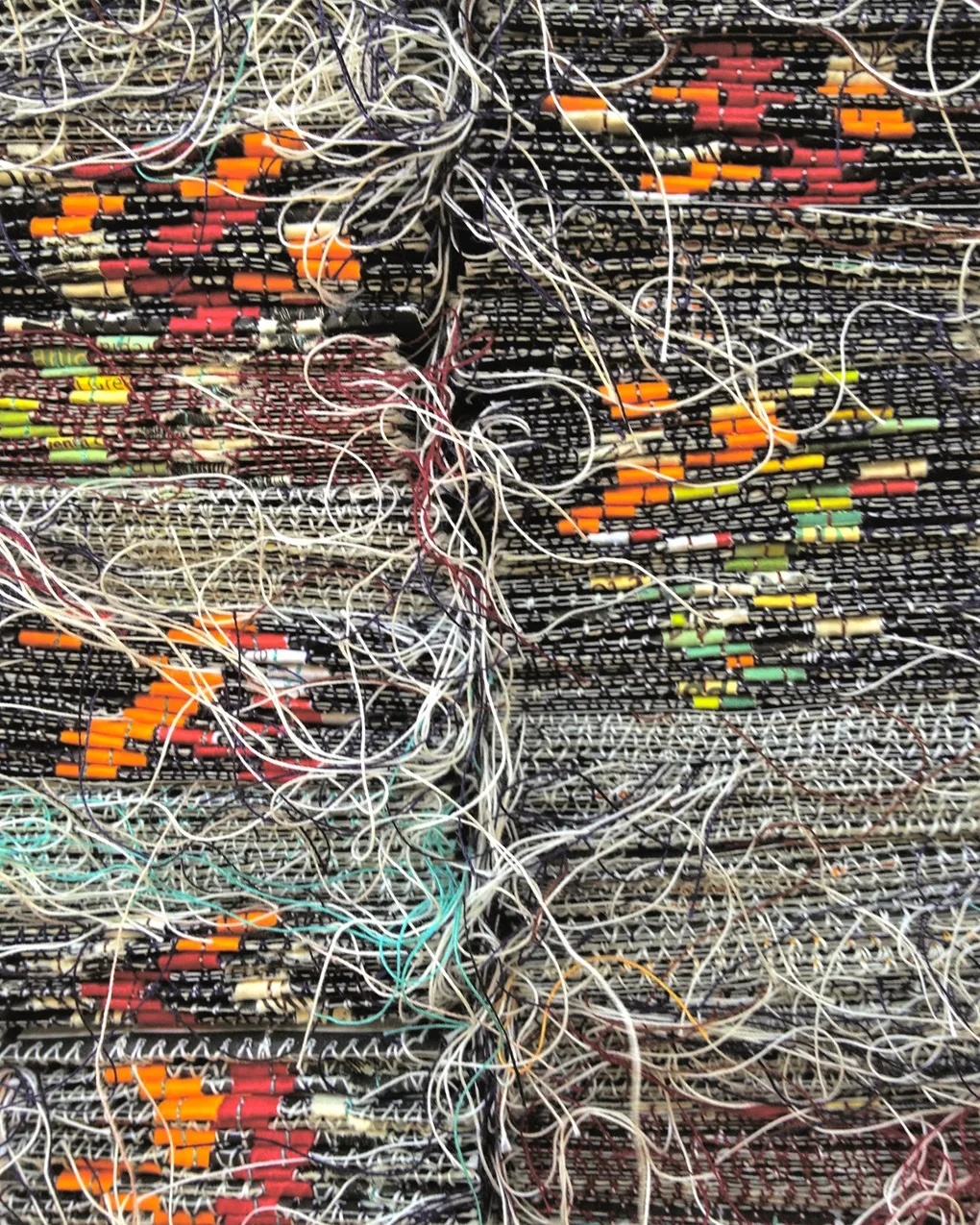
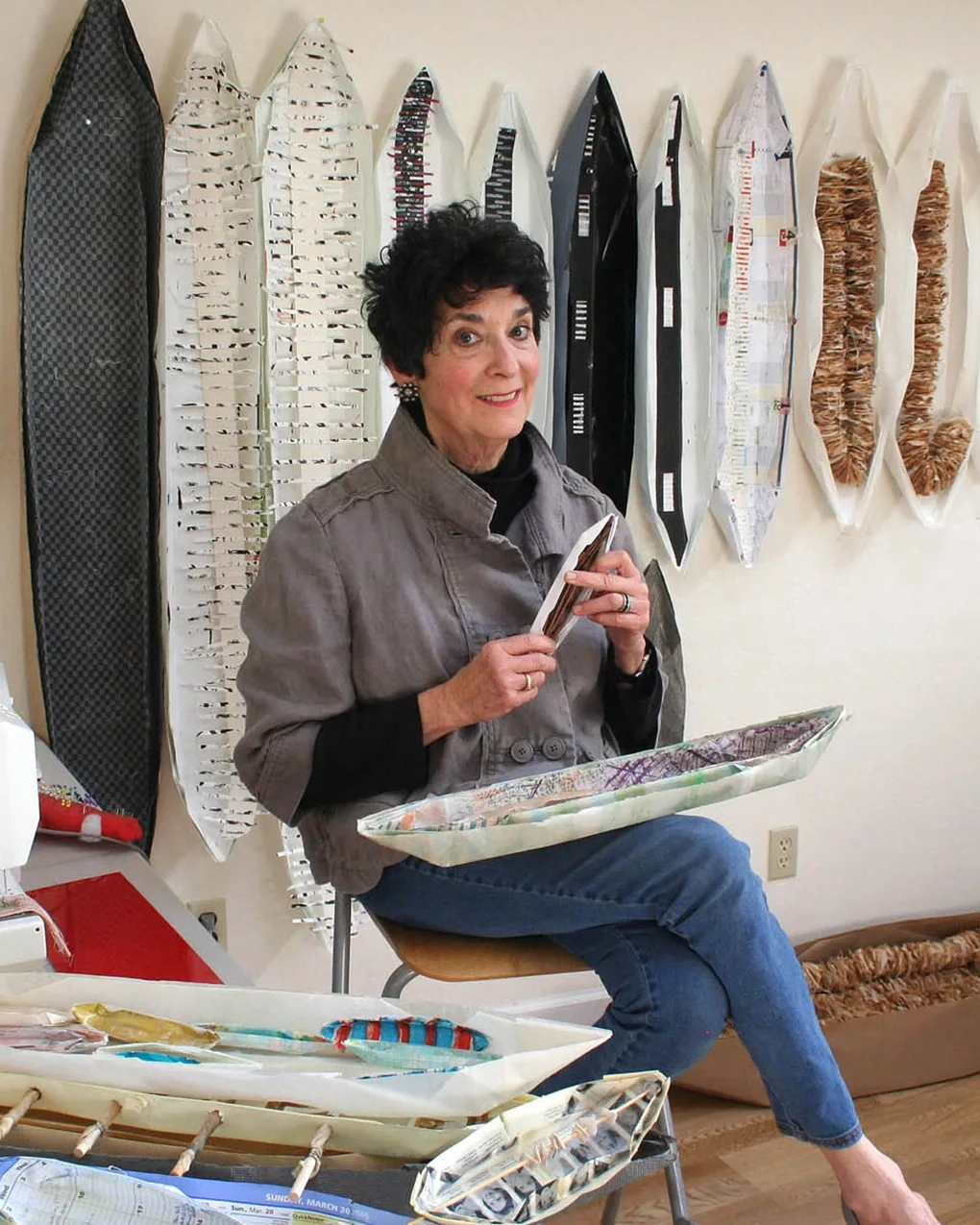
Freedom through limitations
My problem is channelling my wild mind, rather than not having ideas. I will often use the ‘container’ approach. That is to say that I will limit the amount of things I use to create my work.
I give myself an assignment, for example, use only shades of blue, or work in black and white, with these three pens and a cross-cut shredder.
“I find that limiting my options allows greater freedom of exploration.”
Daniella Woolf,
An overarching long-term goal (now that I’m ancient) is to use up all my materials before I go to that big studio in the sky. I try not to buy anything new and instead use what I’ve got.
Of course, that’s a tall order, especially when I find new products or shiny objects I haven’t used, or some artist demos an intriguing product on the web. However, I love to give myself assignments that fit into my ‘constraints promote creativity’ mantra.
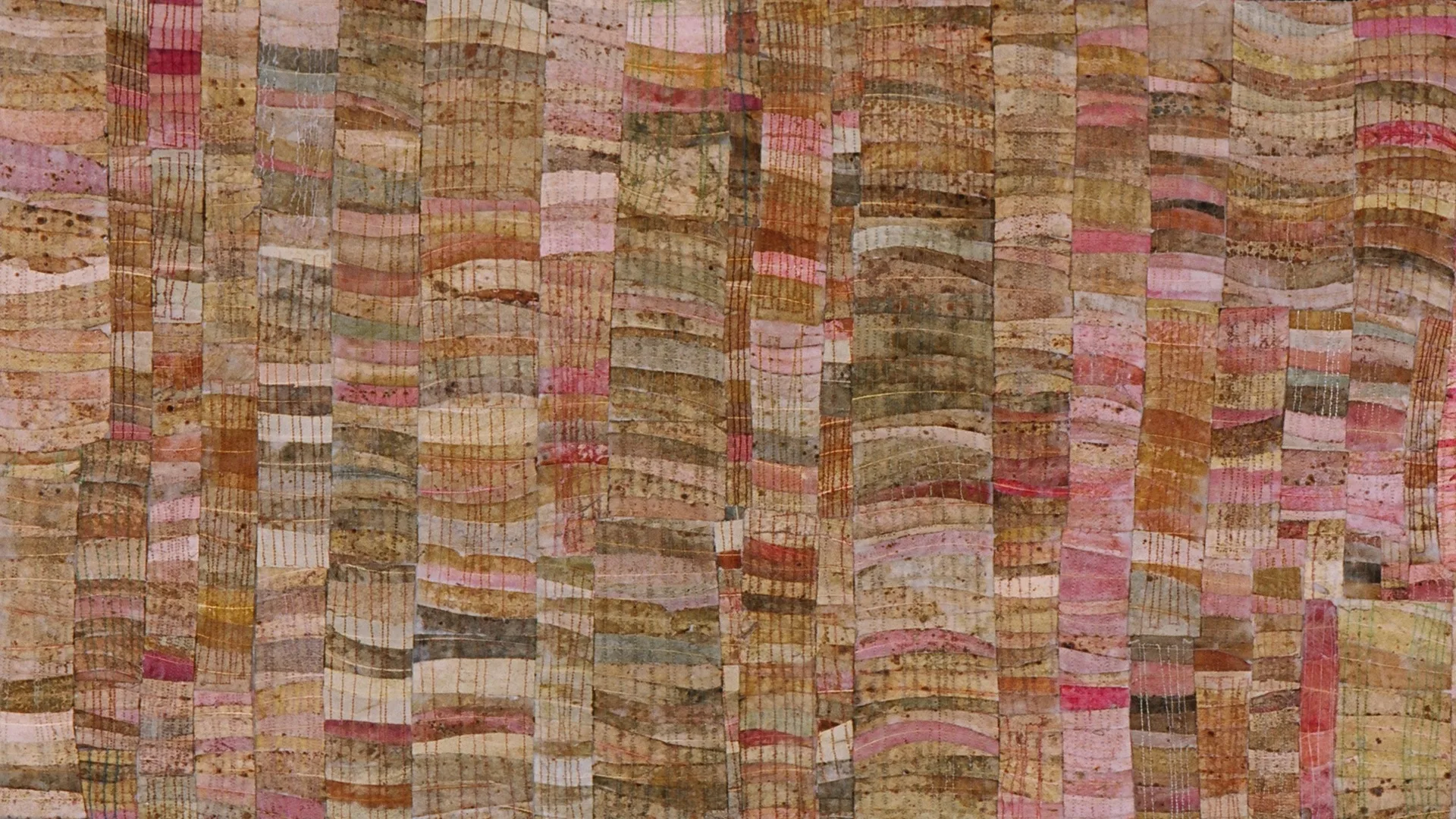
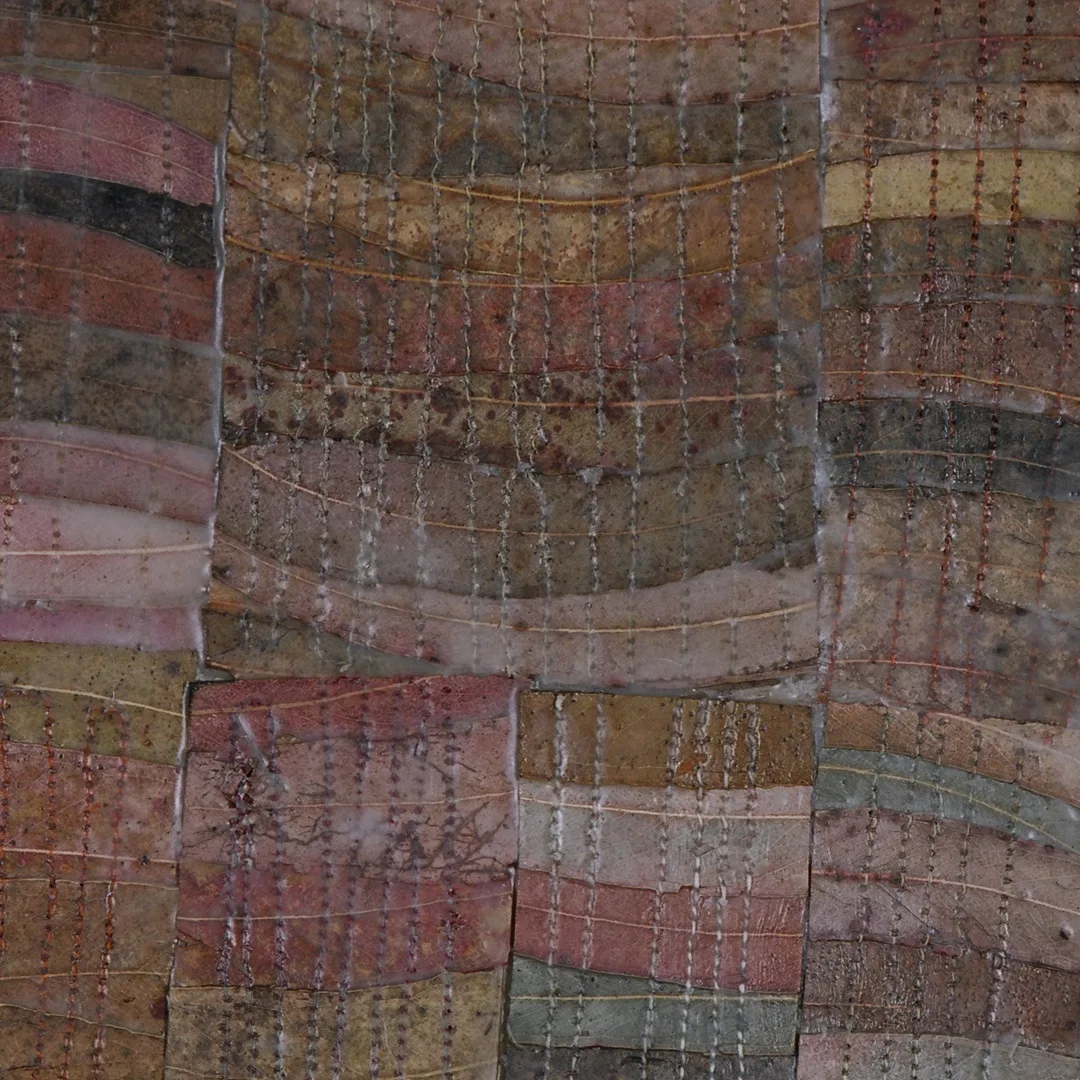
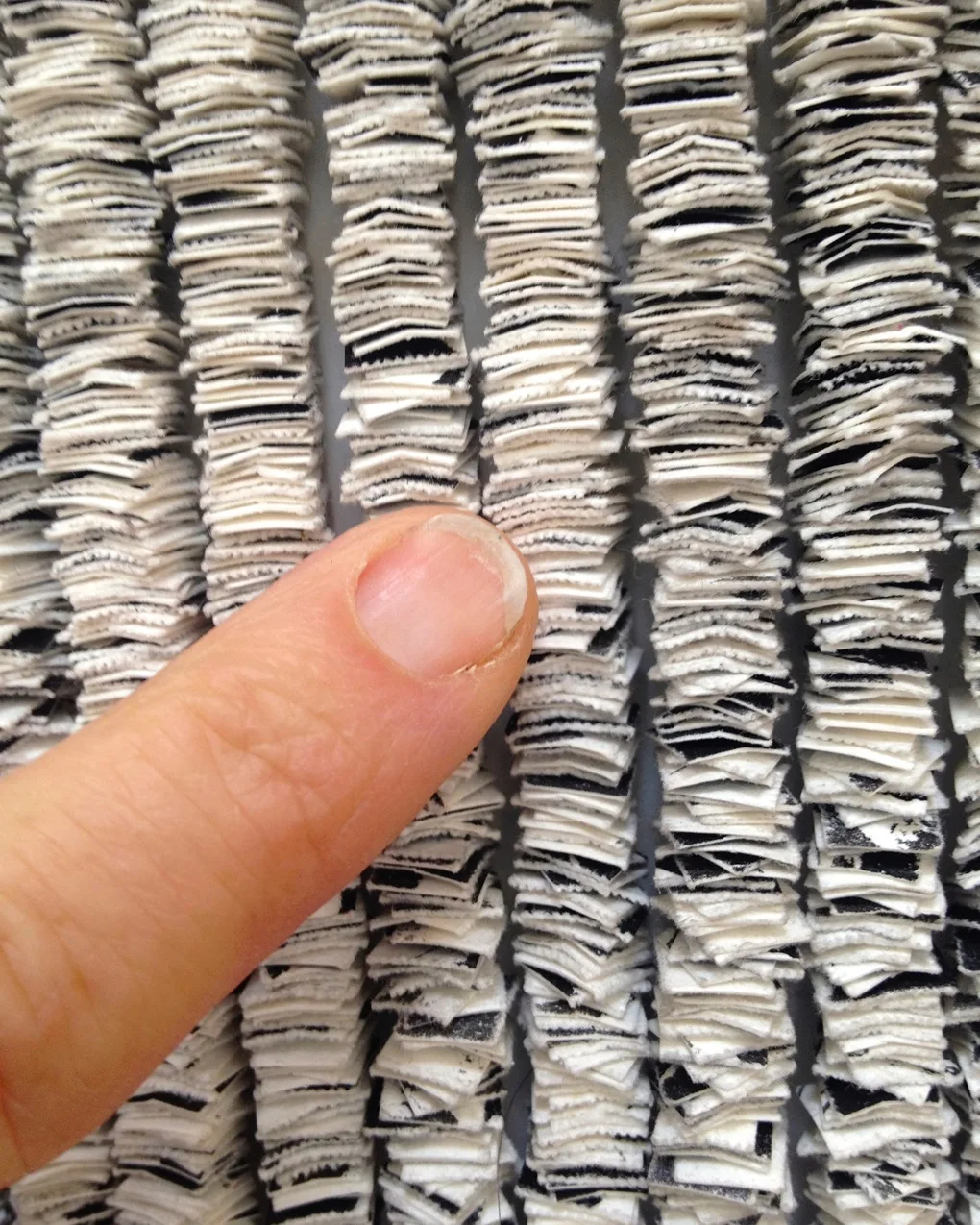
Perfect pandemic project
When the pandemic came along, I thought I’d do a collage every day for a year. Initially, I thought the pandemic was only going to last a few weeks but then it just went on and on. The result was my PPP or Perfect Pandemic Project.
I found myself in the studio first thing every morning, arranging my collage materials, tearing up sketchbooks and making folders of colour combinations.
Using my self-imposed constraints, I used the same size paper: quarter sheets of Rives BFK printmaking paper, 28cm x 38cm (11″ x 15″). I stuck my morning pages in the gutter, and I just went for it with gusto.
I got into a rhythm and some days I made four or even six pieces. I listened to podcasts while I worked.
Usually, I’d work until noon, weigh my collage down, then come back after lunch and zigzag sew the ones from the previous day. Every day, I repeated this (I do have a bit of the OCD, methinks!).
It was surprising how much I loved this daily routine. Until then, I thought of myself as a very social person, but I quickly began to think like a hermit.
I was happy not to have to see anyone, go anywhere and just work in the studio all day. I was stunned to see myself as a recluse.
I finished months early (by 100 days), with all 365 of them complete. Some styles or themes emerged. You can see the entire collection on my YouTube channel, including a time lapse video of me making one page.
I eventually exhibited them in a local gallery. They were hung in their huge front windows because both the front and back were really interesting to see.
The stitching on the reverse was wonderful, and the light came through the stitch holes. It was deeply gratifying. I am just about to put some of my favourites on Spoonflower as tea towels.
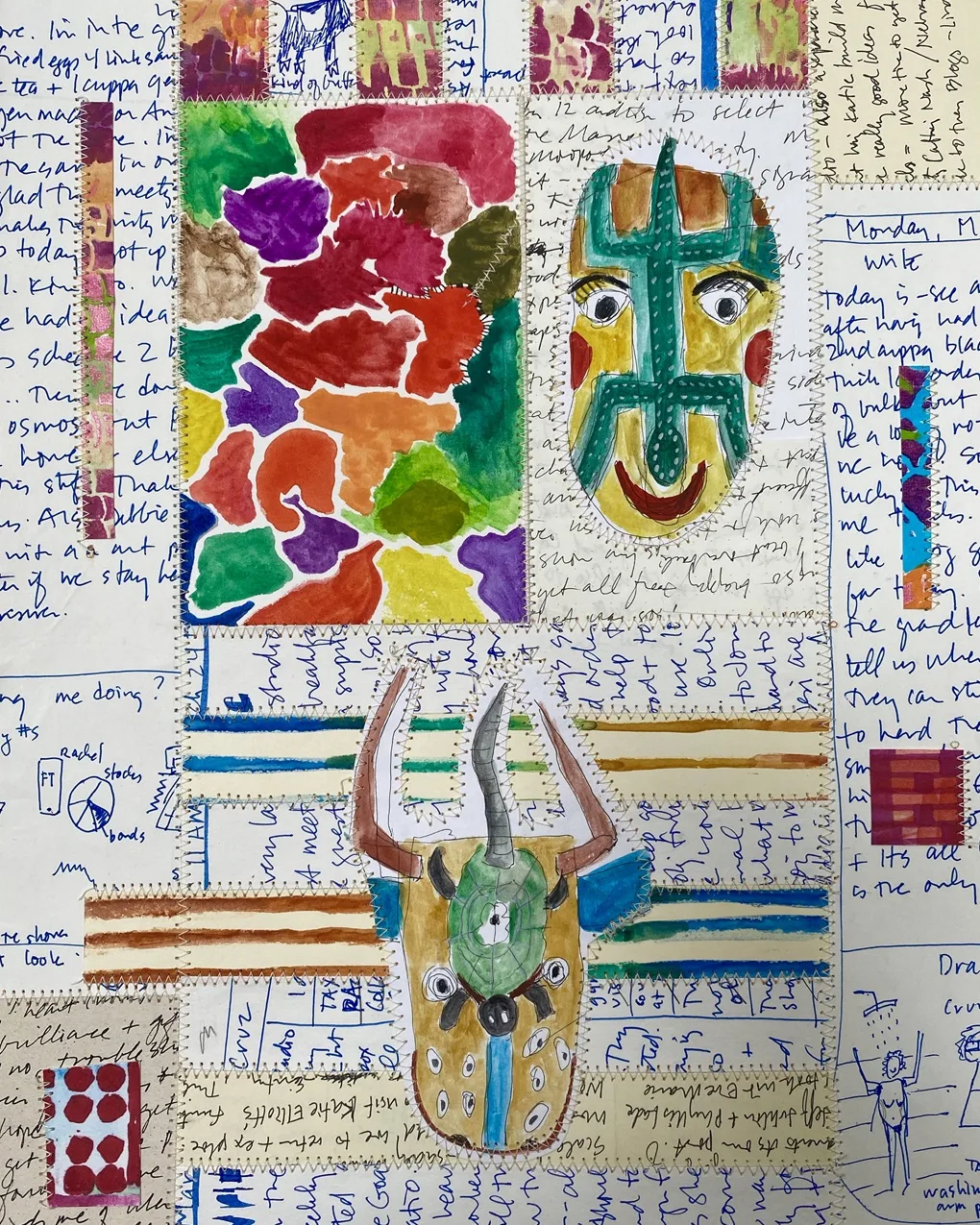
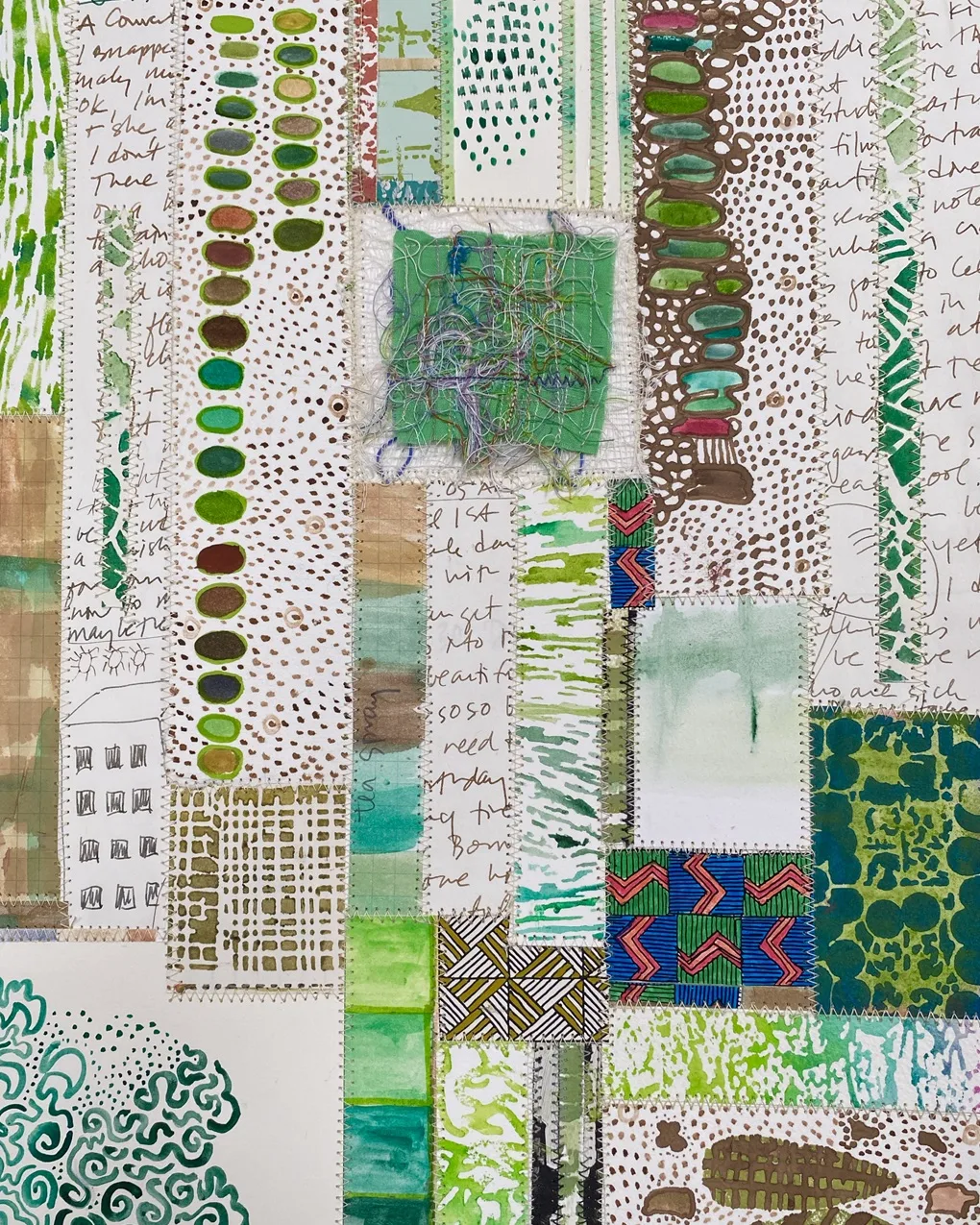
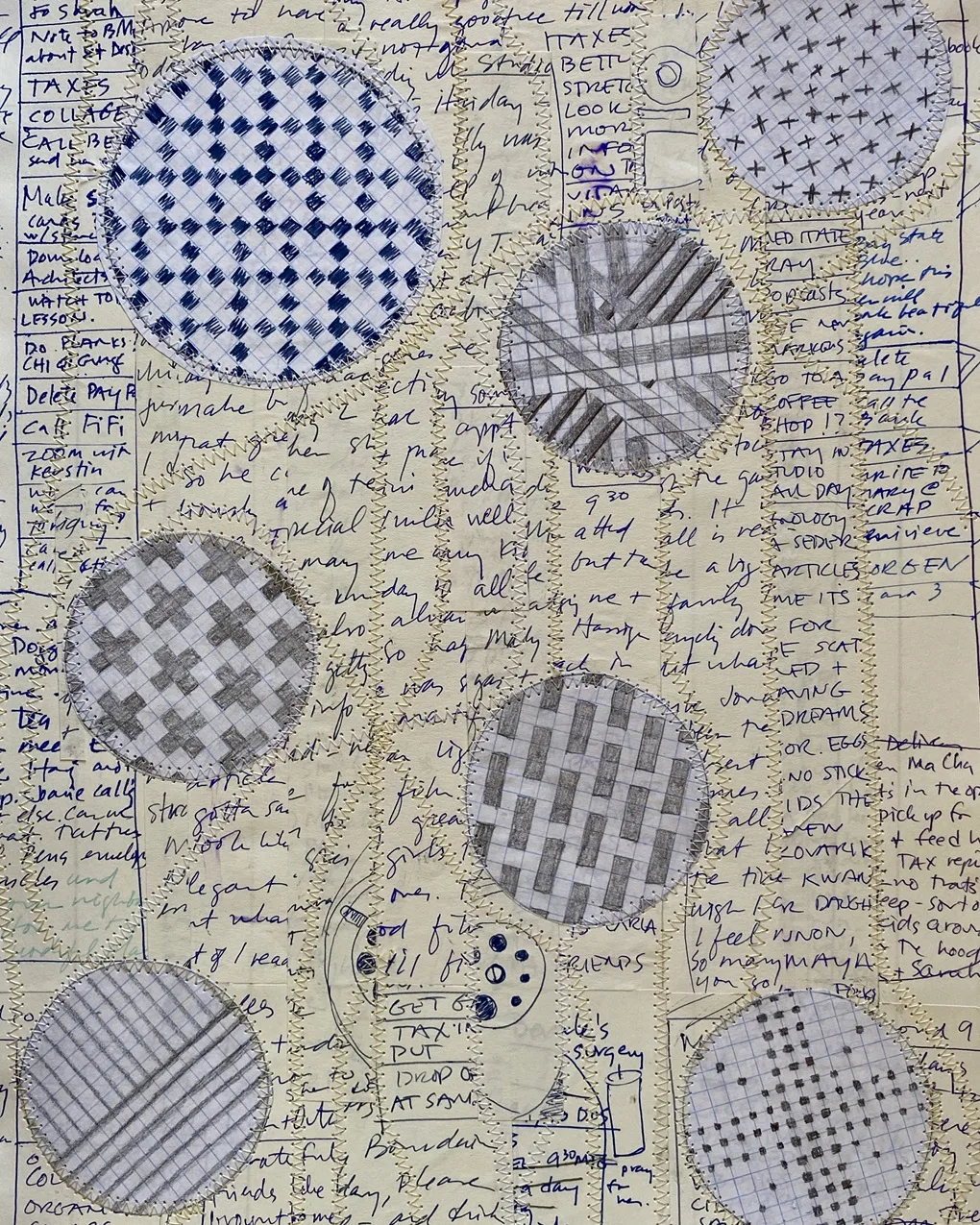
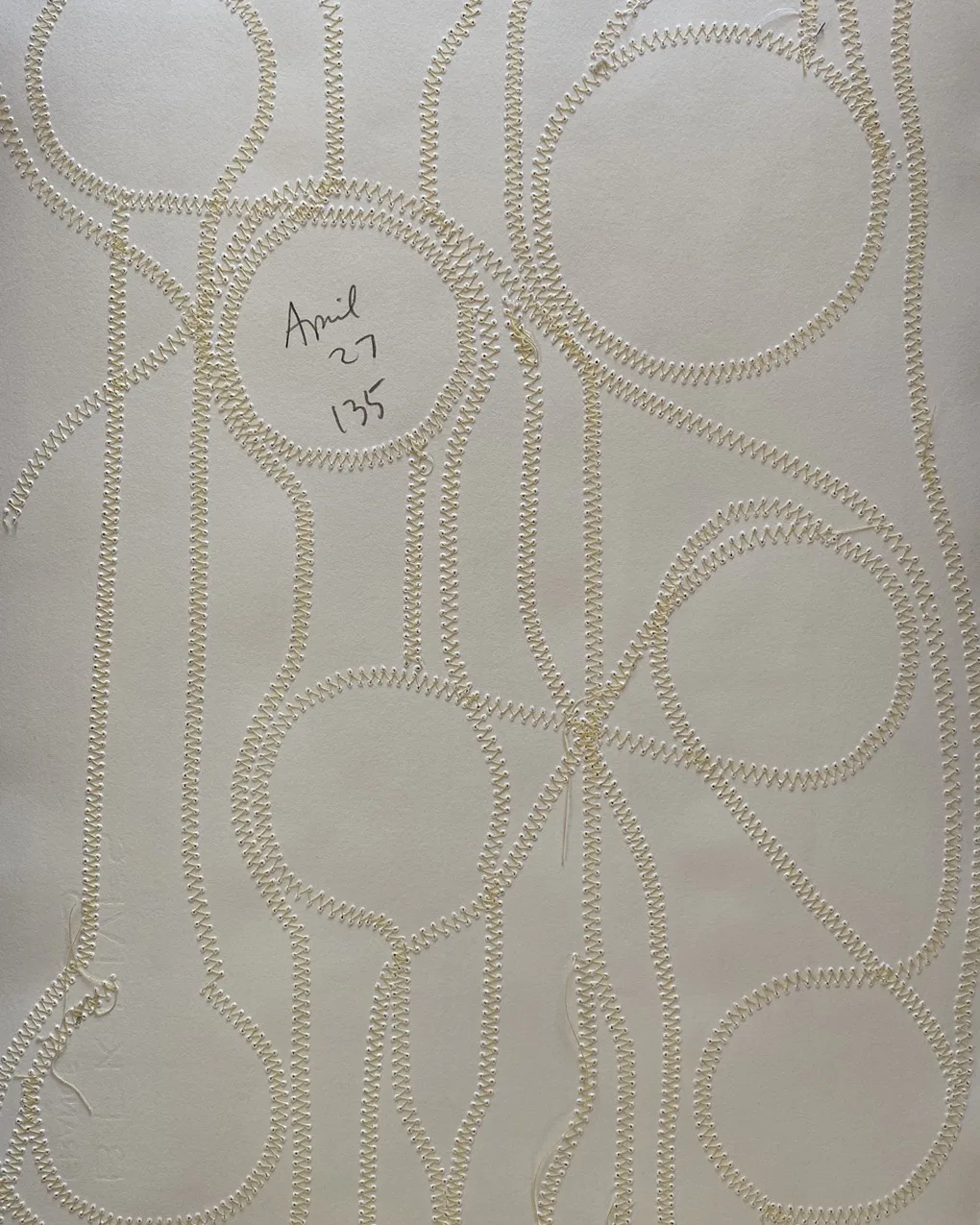
What if?
My work is very repetitive. My mind is fluid. When I’m working, my mind is usually free, and I get a case of ‘What if…?’.
What if I change the gauge of this? What if I do this in ink? What if I make this horizontal or on an angle? What if I glue this to a different substrate? Asking this question may make me change course.
My construction methods are simple: shred, sew, stitch and glue, not necessarily in that order. I love vertical lines and multiples. Most of my works are grid based.
Before I put together my workshop for Stitch Club, I was primarily machine stitching. For the workshop, I was encouraged to provide an alternative to the machine and so I began hand stitching on paper.
Who knew I would love it so much! I appreciate the rigidity of paper and that I can make holes in advance – and follow them or not!
“I follow my gut because it’s always right.
Those still, small voices that say, ‘purple here’ are from a deep knowing place.”
Daniella Woolf,
Years ago, I won the Rydell Visual Arts Fellowship Award, a prestigious art award in our town, and it gave me a new level of confidence. Now, perhaps also because I’m older, I’m less fearful. I’m more willing to experiment, play and have fun.
I always say, don’t be afraid… don’t think – just do!
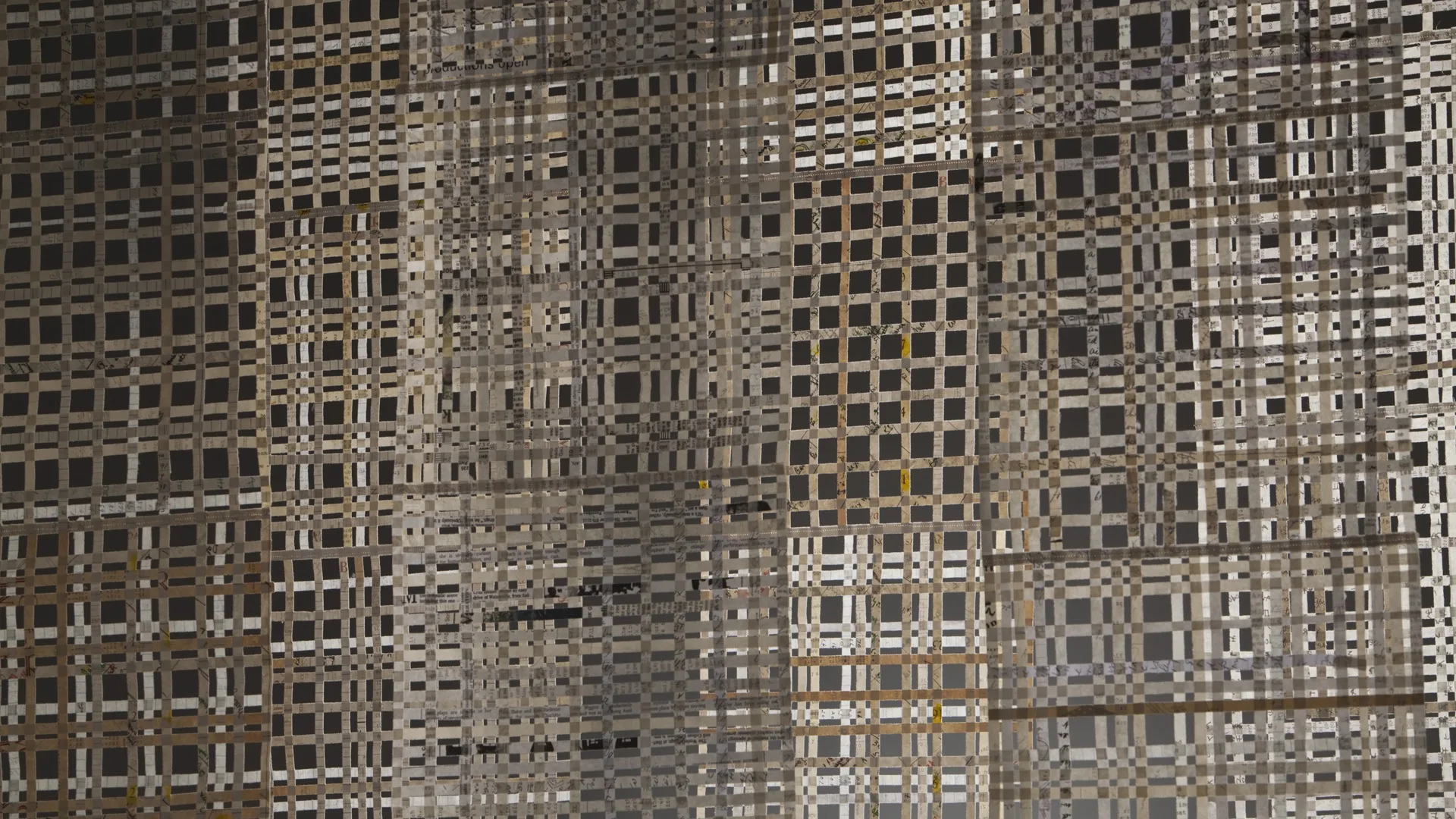
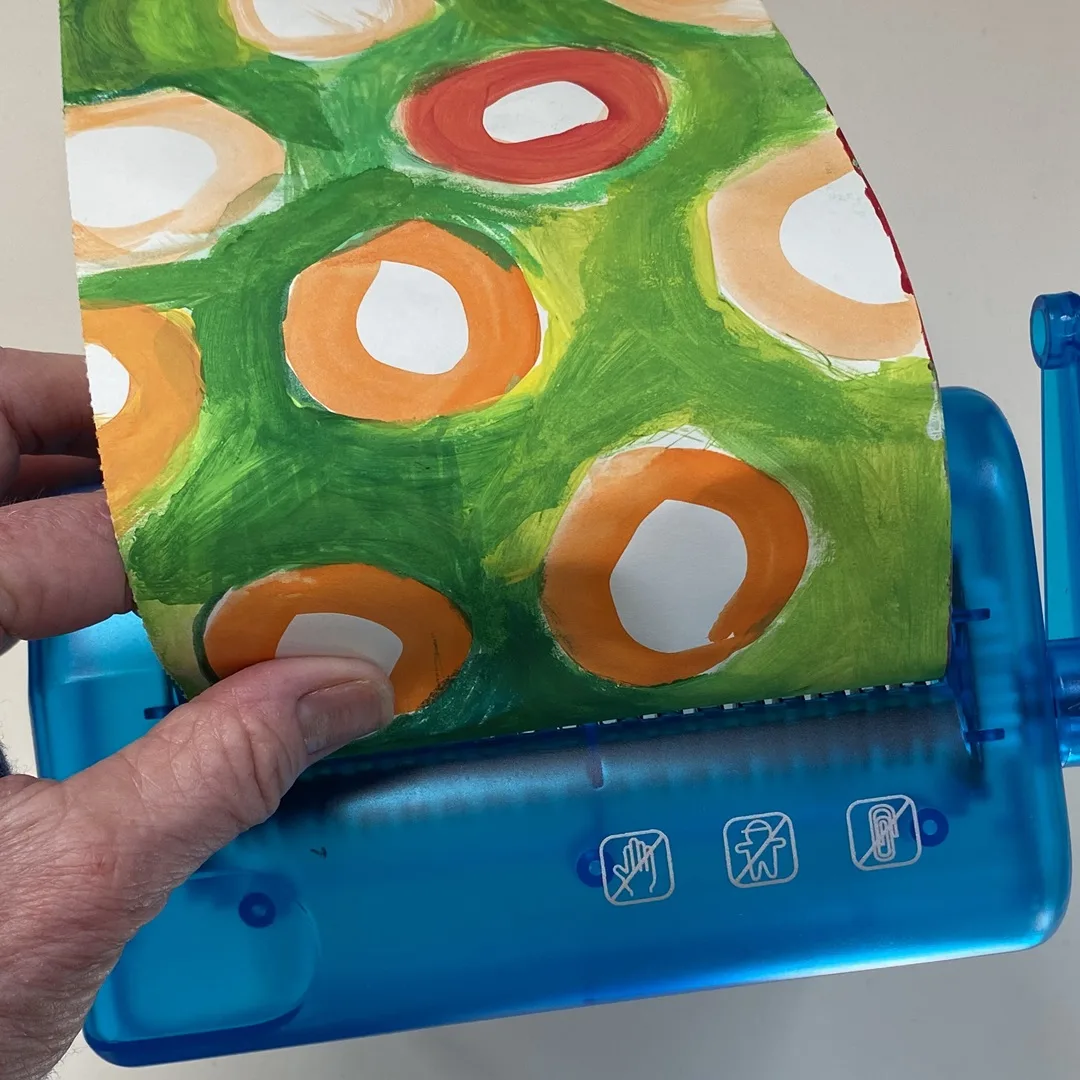
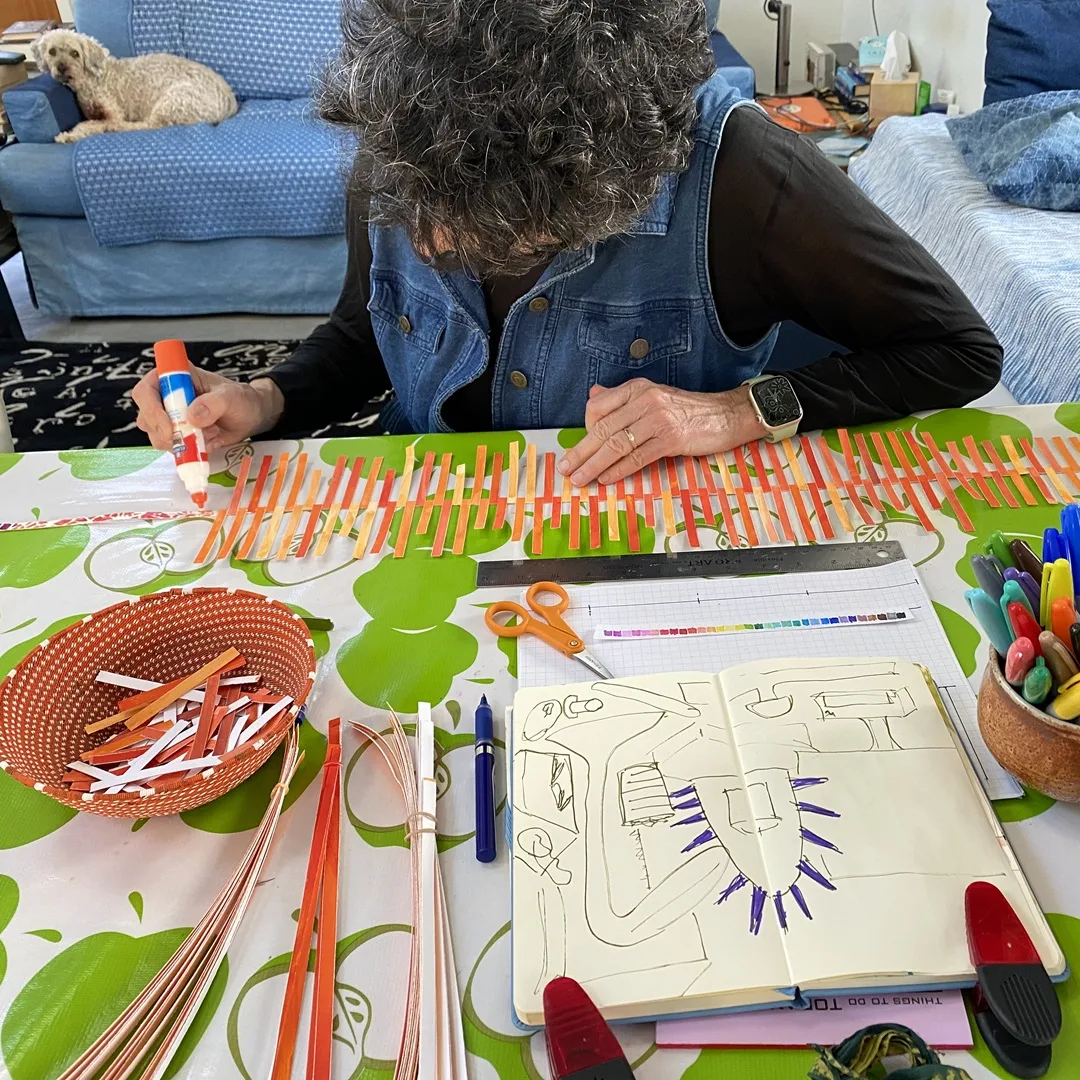
Tools of the trade
I couldn’t live without paper, white glue, scissors, an X-Acto knife with #11 blade, a grid cutting board, plus some kind of tape (washi, blue painters’ or masking).
Lately, I’ve been having a love fest with index cards. They are all the same size and you can get them anywhere.
“Shredding always makes everything look better.”
Daniella Woolf,
I’m painting and sketching more. When I want to learn how to do something quickly, I usually go to YouTube. I still have a fear of drawing, but the brilliant Richard Box (author of Drawing for the Terrified) has helped me immensely.
I’m loving my new set of Kuretake-Gansai Tambi watercolours, and also Posca Markers – I love their flat finish. I’ve recently started playing with acrylic inks and refillable markers.
I love to make colour charts. I’ve been particularly locked into greens and oranges. I’ve been making lots of compositions with those colours: painting the greens, getting paint samples from the hardware store, shredding them.
I’ve written morning pages and followed Julia Cameron’s The Artist’s Way practice for a long time. Writing helps me clarify things. These pages find their way into my work.
Making time for an ‘artist date’ is also inspiring. I love being in nature, taking walks, simply observing and photographing.
I adore Sonia Delaunay, Pierre Bonnard, and El Lissitzky and the Russian Constructivists (early 20th century artists who made constructed, geometric-based works with a focus on the technical use of materials and referencing the industrial world).
Also, The Grammar of Ornament by Owen Jones, an elaborately illustrated book of diverse patterns, motifs and ornamentation, first published in 1856.
Seduced by fibre
I started as a biology major in college because I loved science, especially physiology. I wanted to be a surgeon (in those days art was a hobby, not a career, right?).
I always had excellent fine motor skills but I needed maths and chemistry in which my skills were quite lacking! So I changed my major to studio art.
I had shown promise in the arts at an early age, winning an art scholarship at 13, and some awards for jewellery design at 16.
In 1969 I went to Haystack, a crafts school in Deer Isle, Maine, for a summer session as a jeweller/metalsmith. The jewellers were quite serious and subdued, while the weavers were staying up until all hours of the night, listening to Bob Dylan, and having the most fun.
One night I went to a talk by Walter Nottingham, a fibre artist. He talked about the magical mythical qualities of fibre and how one of his students had sewn a quilt and put a lock of their lover’s hair in a secret hidden pocket in the quilt. I was hooked.
After the talk, he wrapped my short hair in a zillion colours from the weavery. I had maybe a hundred little coloured ‘palm trees’ with my black hair sticking out all over my head.
“I was transformed at that moment into a textile artist.
I was forever changed.
That was my entry into the textile world.”
Daniella Woolf,
I returned to my college for my senior year and took every textile class they offered. I went on to gain an MA in Fiber at UCLA. It was a magical time. In October 1971, there was an exhibition at the gallery at UCLA entitled Deliberate Entanglements, showing the international rock stars of the textile world.
Simultaneously the Pasadena Art Museum (now the Norton Simon Museum of Art) was having an Eva Hesse retrospective. I remember sitting out in the courtyard thinking that I was in the right place at the right time.
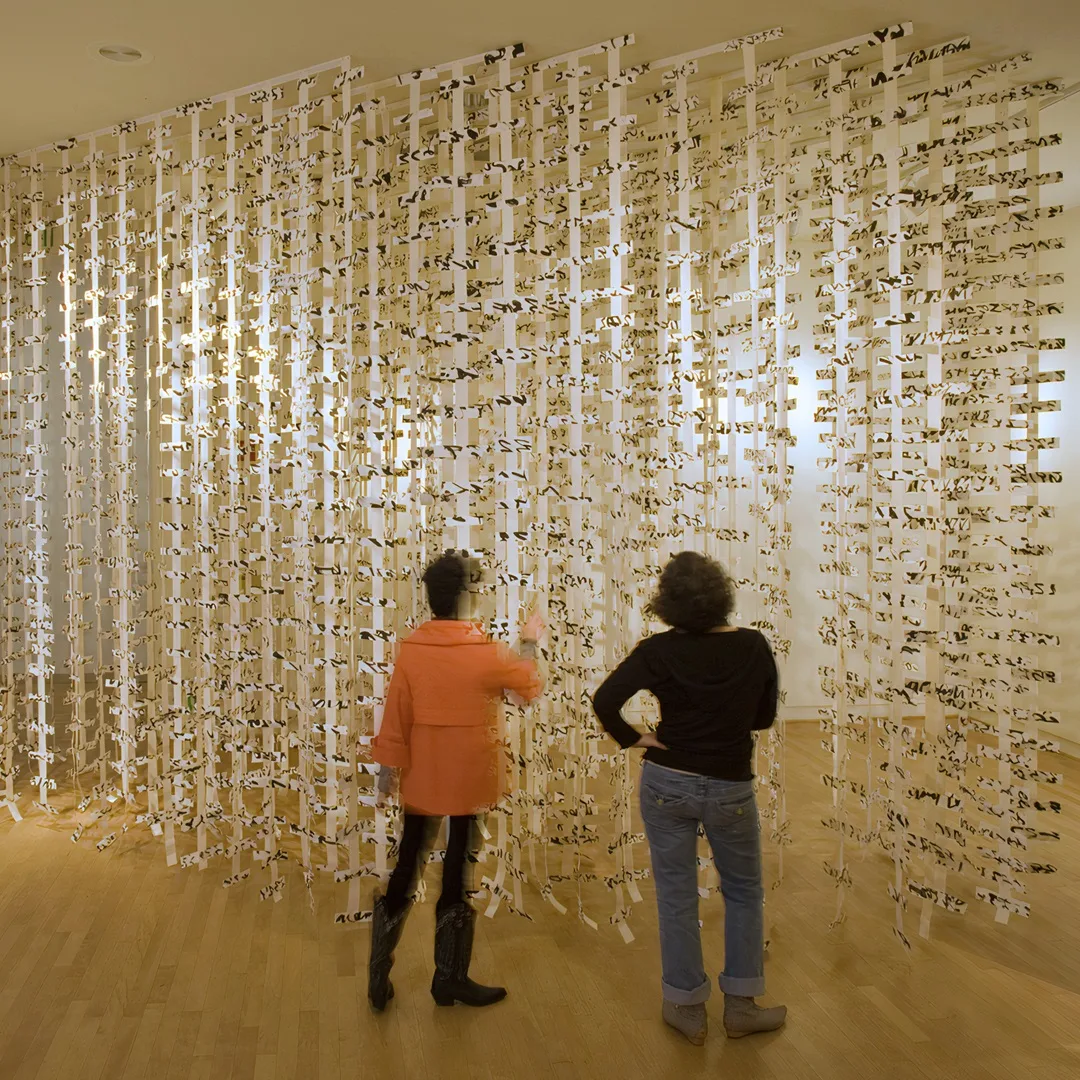
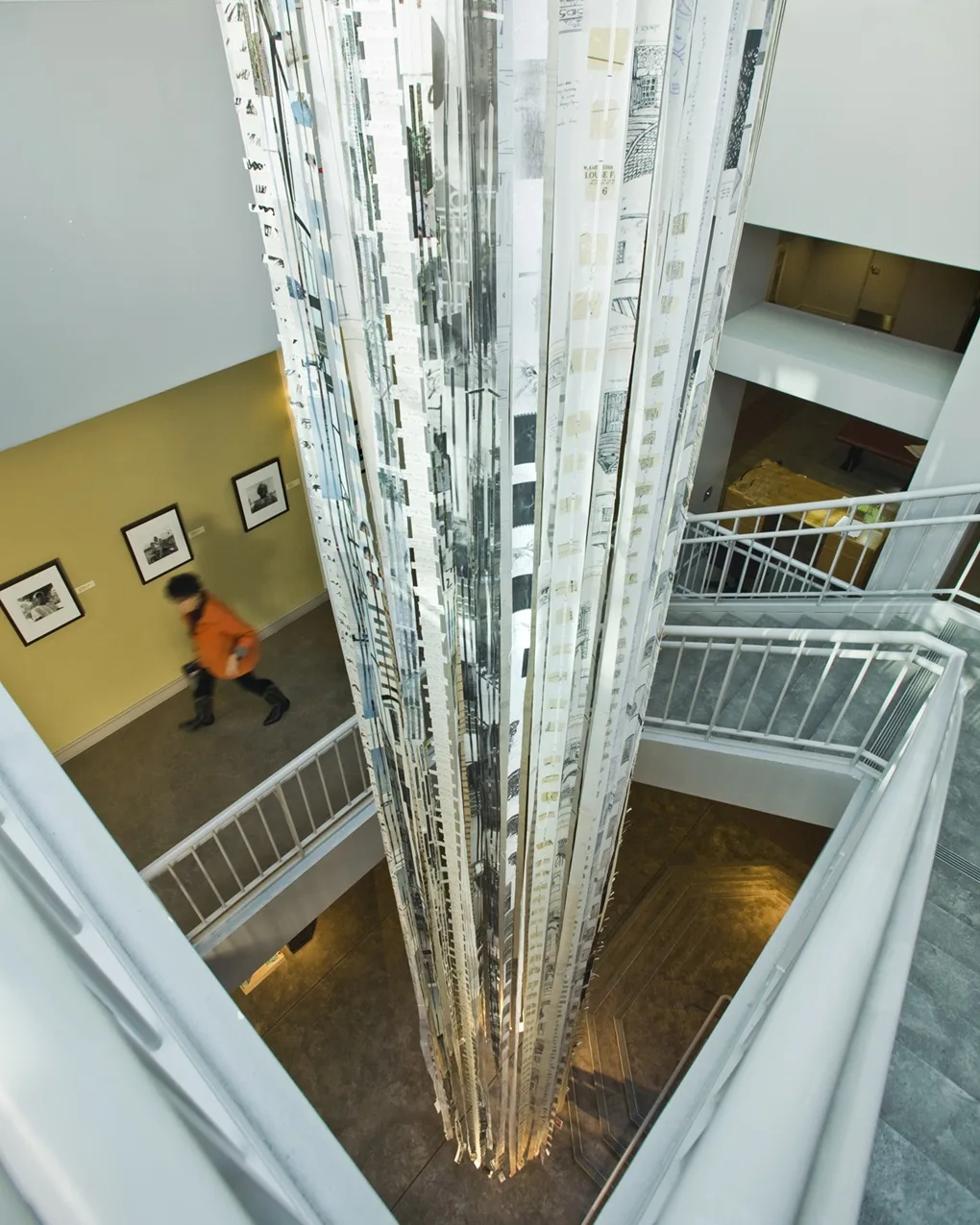
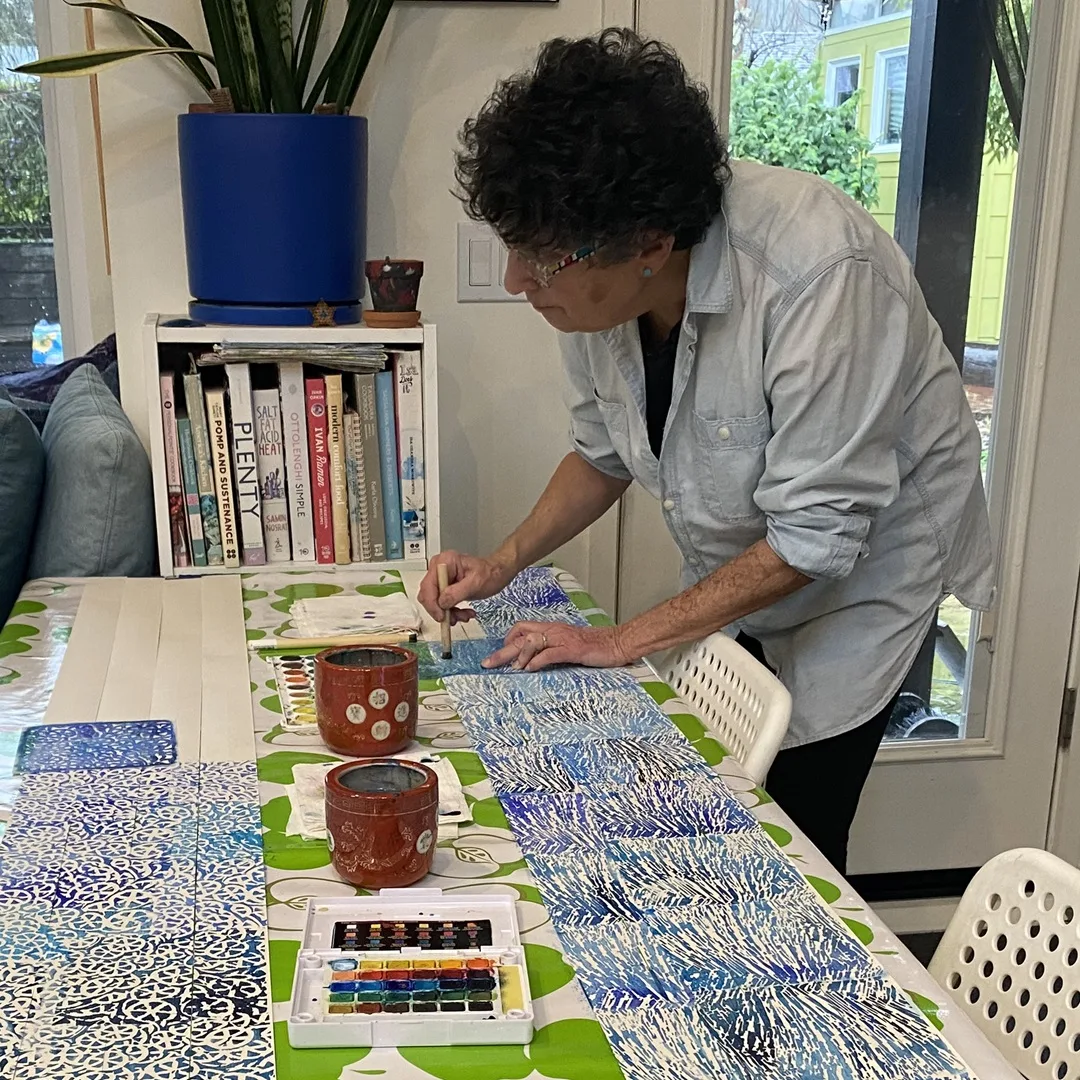
East meets west
My most recent ‘achievement’ is pretty interesting. I was contacted by The National Museum of Modern Art, Kyoto. They wanted a photo of an installation entitled Forest, that I made in 1972, which was shown in the 1975 Tapestry Biennial in Lausanne.
The photo was for a catalogue of a retrospective of renowned textile artist Masakazu Kobayashi (1944-2004). Coincidentally, I was going to be in Kyoto and so I was invited to visit and meet with one of the curators.
It was very exciting and so inspiring. I recently received the catalogue, which is in itself a work of art. Even the bound sections of the text catalogue are sewn with hot pink thread!
I am so proud that a work from so long ago has received recognition. It was my first trip to Japan, and I loved it more than I can say. My only regret is that it took me so long to get there. I hope to return many more times.
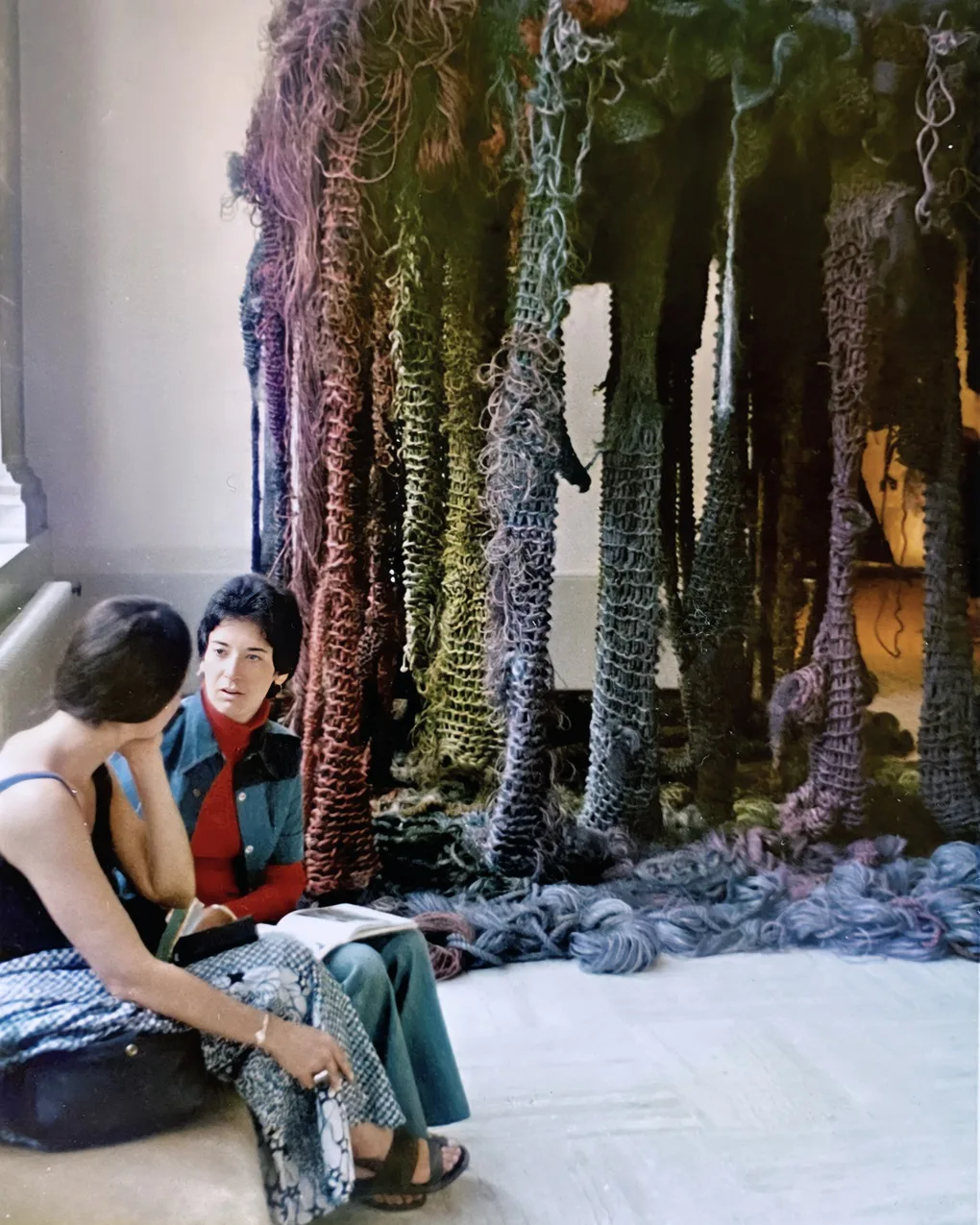
Growing up with the movies
My early influences came from our family business. My dad had a prop house in Hollywood. He could supply any props (not costumes) for movies or print media.
There were collections of Native American Kachina dolls (depicting the kachina spirits from the Pueblo cultures), rugs and baskets. He had samovars and copper and silver cooking vessels, tea sets and oil paintings.
There were wagon wheels, dining sets, light fixtures, telephones and furniture of every kind. In fact, our English mahogany Chippendale dining set regularly disappeared, to be used in movies.
My dad’s desk was stacked with fabulous reference books about styles of furniture, architectural ornament and antiques. I looked at these constantly. I used to go to studios and movie sets with him. Disneyland was one of our clients so we went there often.
Another early influence was going to the theatre with my parents. We went to the Civic Light Opera and saw musicals and theatre plays. My childhood was quite culturally enriched.
I remember the musical Oliver having a tremendous influence on me. I was fascinated by the way the set rotated and became a new scene by simply changing the angle.
“I think this is where I began to think about making large scale artworks, and how it relates to human form.”
Daniella Woolf,
Always learning
I learned many things while putting together my Paper: Shred and Stitch workshop for Stitch Club. It had multiple components, some of which I didn’t know how to do and had to learn ‘on the job’, for example, learning how to film properly.
I spent a lot of hours in the studio, steadily chipping away to meet the goals in the time frame. I experienced many ideas sprouting during all this luscious studio time, working every day, being around materials. My ‘What if…?’ questions flowed and I felt inspired to make new work and keep exploring.
I returned again and again to the simple ‘rules’ in the book Plain and Simple: A woman’s journey to the Amish by Sue Bender: ‘Trust the process. All work is important. All work is of value.
Since all work is honoured, there is no need to rush to get one thing over so you can get on to something more important.’
“Perhaps the biggest thing I learned from this project is to just do.
Don’t think.”
Daniella Woolf,
If it’s being created by you, there is divine inspiration behind it. Don’t judge, just do. Just do a little bit every day.
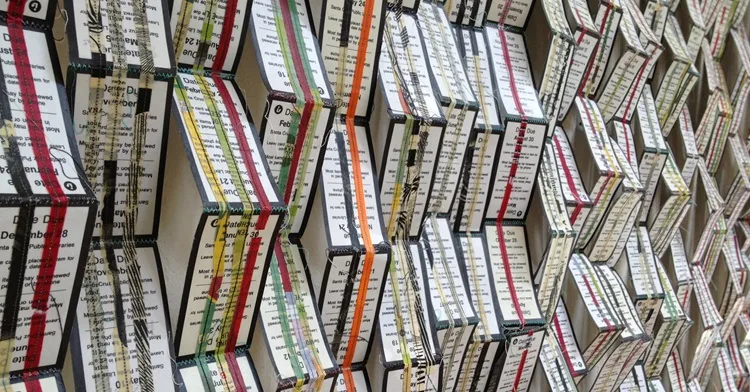

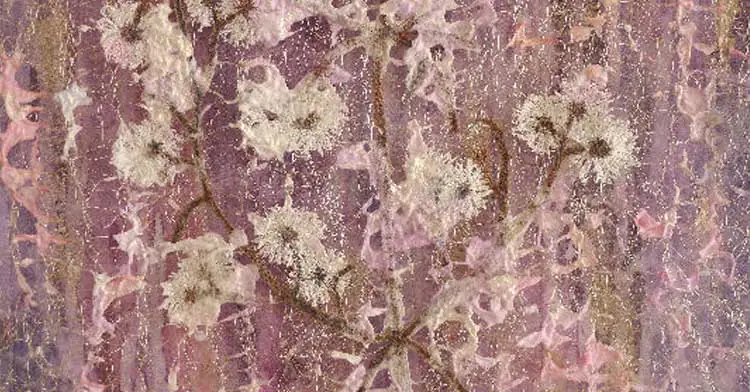
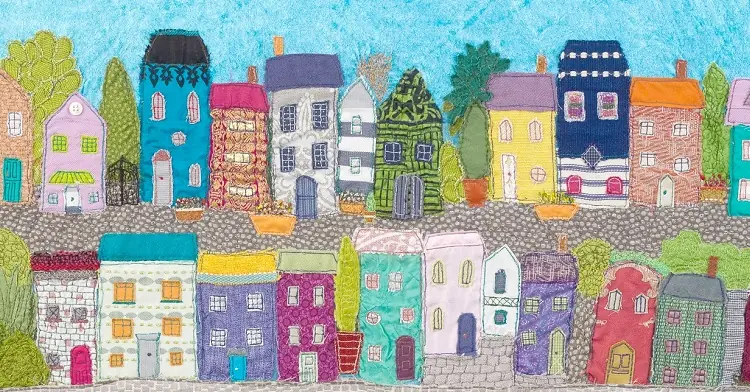
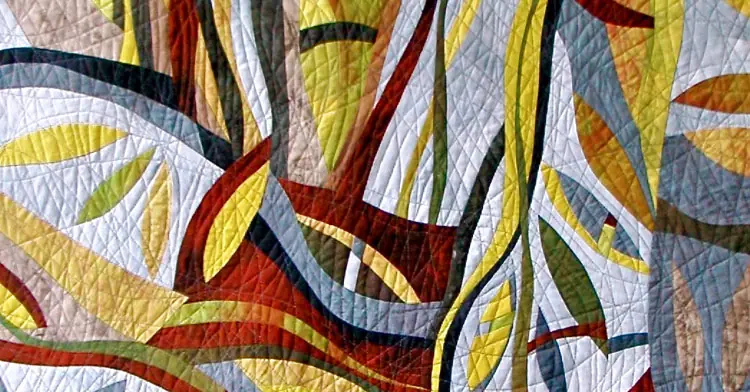
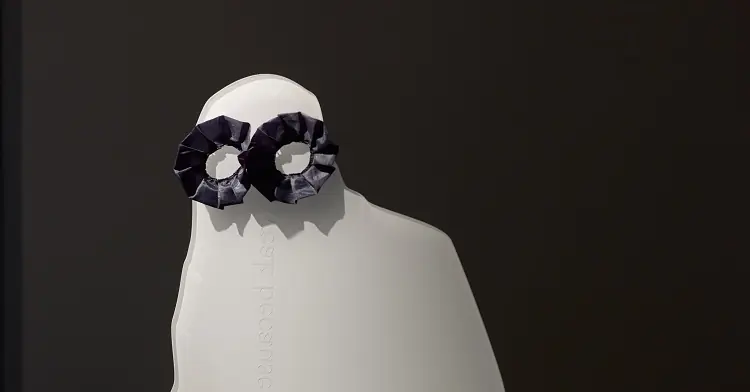
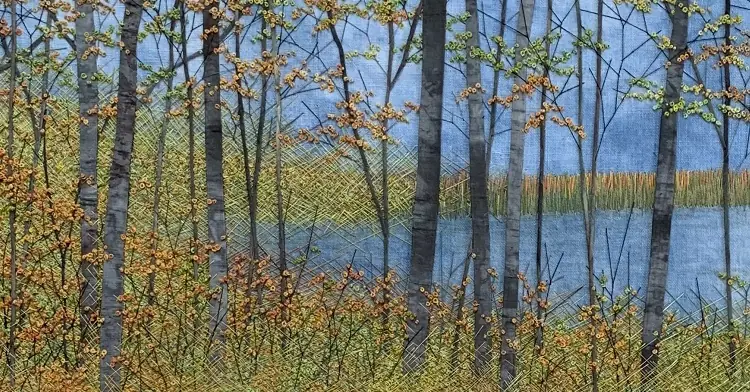
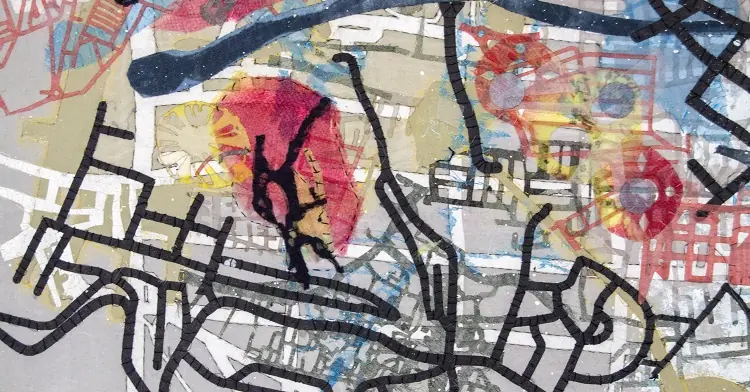
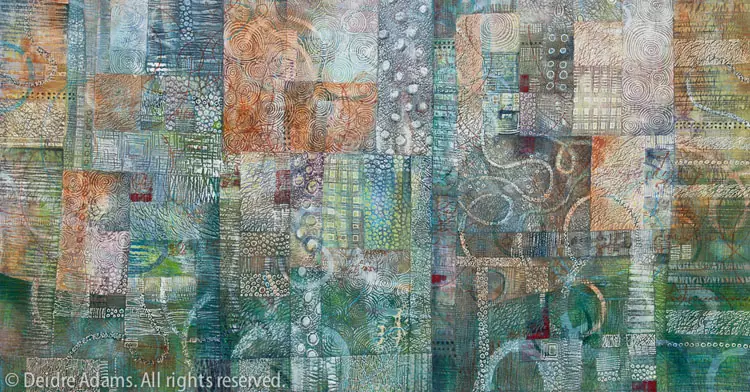
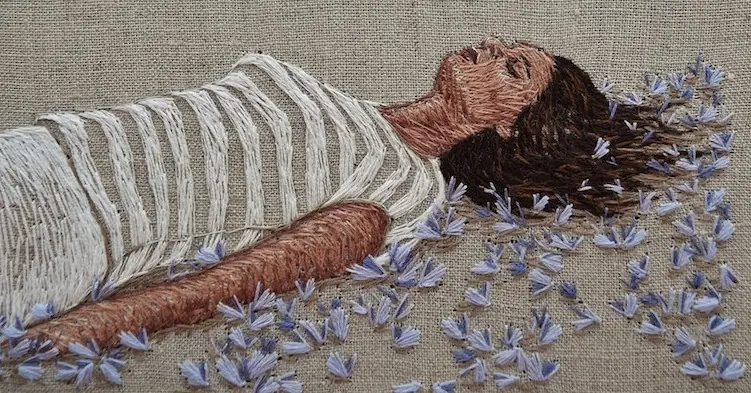
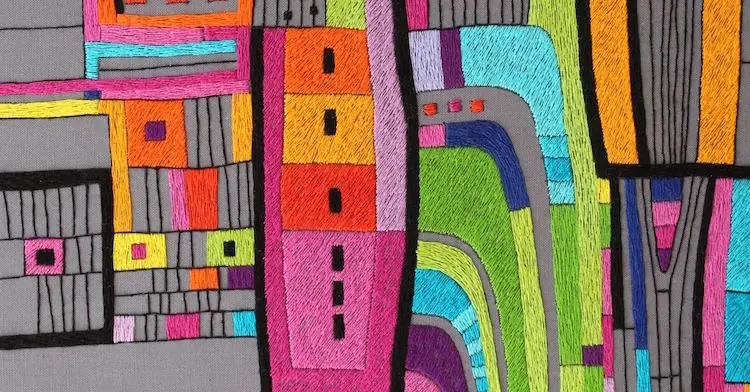
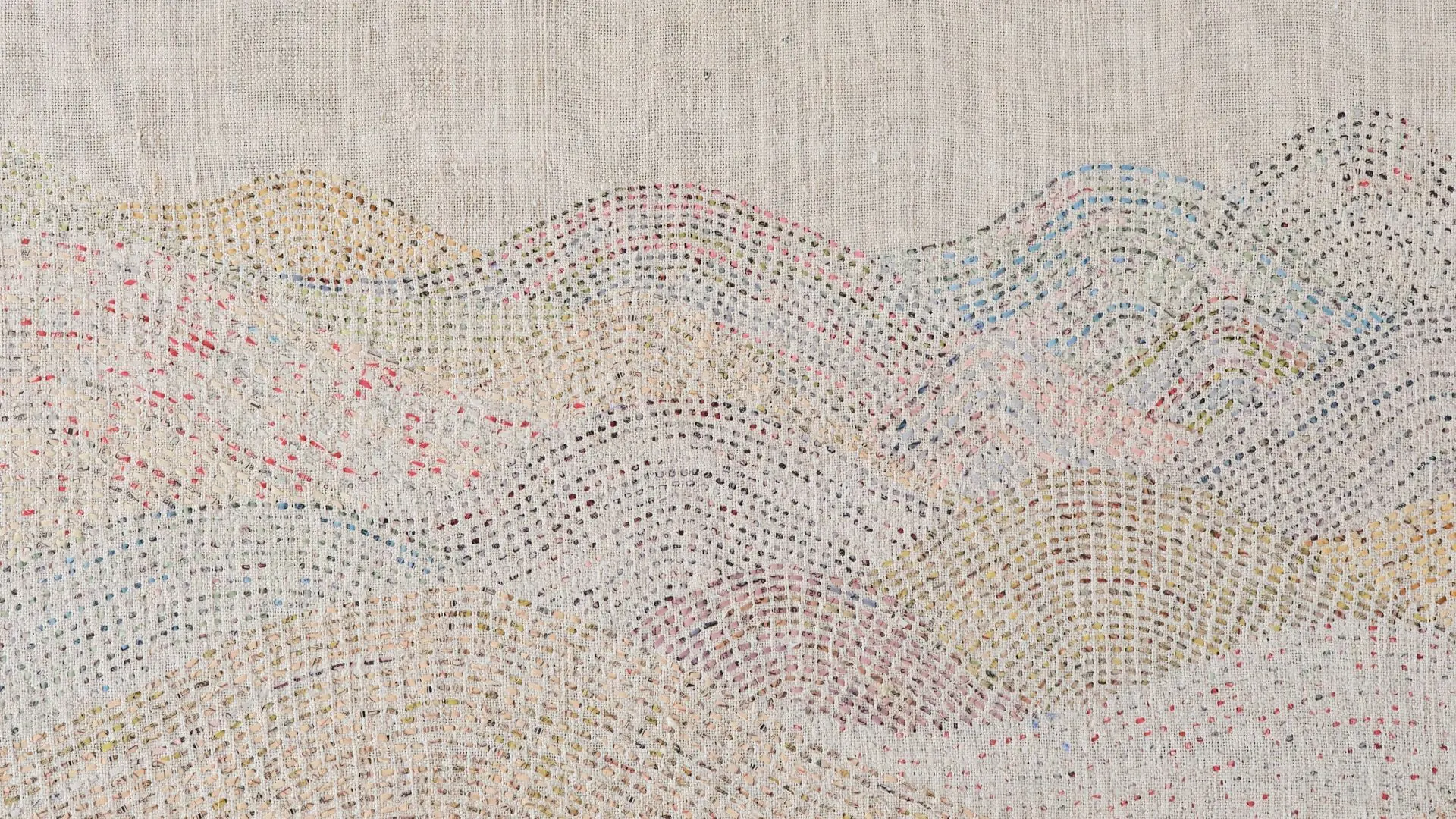
4 comments
Joy Stocksdale
Daniella, so glad to see you are still making intriguing pieces. I enjoyed reading your story, hearing about your process and seeing your work. Keep going! Joy
Siân Goff
Thanks for your comment, Joy! We’re so glad you enjoyed reading all about Daniella’s inspiring work and story.
Shannon
I so appreciated Daniella Wolfe’s post and unique creative outlet. So prolific and fluid, from one so restrained -this is wonderful to see. Thank you for contributing!
Siân Goff
Thanks for your comment, Shannon. Daniella is very inspiring!